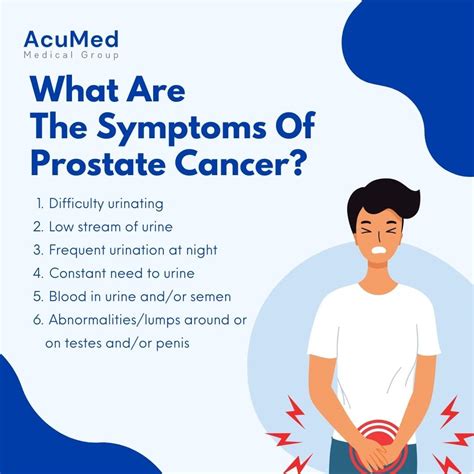Does Ejaculation Frequency Influence Prostate Cancer Risk?
Prostate cancer accounts for approximately 15% of all new cancer diagnoses among men worldwide, and the burden of disease continues to increase globally. In this article, Dr. Paul Henning investigates whether ejaculation frequency has any bearing on prostate health.More

Prostate cancer accounts for approximately 15% of all new cancer diagnoses among men worldwide, and the burden of disease continues to increase globally(1).
Although prostate cancer is a concerning disease; it’s causes remain unknown.
Genetics certainly play a role and there is reliable evidence that diet, exercise, and other lifestyle factors are also crucial.
Since the prostate is a reproductive organ that produces fluid for the ejaculate, scientists have long wondered if sexual factors influence a man's risk of prostate cancer. A recent Harvard study provides good news for sexually active men(2). The Health Professionals Follow-Up Study has been collecting information about a large group of volunteers since 1986. The original study was the health professional’s follow-up study utilizing self-reported data on average monthly ejaculation frequency. The study includes 31,925 men who answered questions on ejaculation frequency and were followed over time. All the men are health care providers, including dentists, pharmacists, veterinarians, optometrists, ophthalmologists, and podiatrists.
Men between the ages of 46 and 81 provided information about their average number of ejaculations per month in young adulthood (age 20–29), middle age (40–49), and in the most recent year.
Ejaculations included sexual intercourse, nocturnal emissions, and masturbation. The volunteers provided comprehensive health and lifestyle data every two years until the study concluded in 2000(2).
Major Findings
The scientists found no evidence that frequent ejaculations mark an increased risk of prostate cancer.
In fact, the reverse was true: High ejaculation frequency was associated with a decreased risk of prostate cancer.
Compared to men who reported 4–7 ejaculations per month across their lifetimes, men who ejaculated 21 or more times a month enjoyed a 31% lower risk of prostate cancer(2).
An initial report published in 2004 for this cohort found that more frequent ejaculation was related to a lower risk of total prostate cancer, with the strongest associations for higher frequency in the year before questionnaire distribution(3).
With an additional decade of follow-up, the Harvard study demonstrated that ejaculation frequency at three different time points during adulthood is associated with statistically significant modest reductions in risk of total prostate cancer. Another study from Australia examined the impact of sexual factors on the occurrence of prostate cancer before the age of 70 in 2,338 men. Like the American study explained above, Australians who ejaculated most frequently enjoyed a reduced risk of prostate cancer.
Men who averaged 4.6 – 7 ejaculations a week were 36% less likely to be diagnosed with prostate cancer prior to age 70 than men who ejaculated less than 2.3 times a week(4).
Mechanisms of Action
There are several mechanisms that have been proposed to explain an inverse association between ejaculation frequency and prostate cancer.
- Prostate stagnation hypothesis. This essentially proposes that carcinogenic substances accumulate in the prostate, and thus longer intervals between ejaculations provide greater opportunity for tumorigenesis(5).
- Hinderance of metabolic switch from citrate secretion to citrate oxidation: The malignant process requires the genetic and metabolic transformation of zinc-accumulating citrate-producing normal cells to citrate-oxidizing malignant cells that lose the ability to accumulate zinc.
More frequent ejaculation may influence the function of peripheral-zone epithelial cells, hindering the metabolic switch from citrate secretion to citrate oxidation known to occur early in prostate tumorigenesis(6).
- Reduction of prostatic intraluminal crystalloids. Alternatively, more frequent ejaculation may reduce the development of prostatic intraluminal crystalloids. It’s been demonstrated that prostatic crystalloids and high-grade prostatic intraepithelial neoplasia were significantly associated with the presence of adenocarcinoma(7). More frequent ejaculation may potentially decrease the development of these crystalloids and intraepithelial neoplasia, thus reducing the chances of adenocarcinoma.
- Psychological tension relationship to prostate epithelial cell division. Higher ejaculatory frequency may be linked to decreasing psychological tension and suppressing the central sympathetic nervous system, which could diminish the stimulation of prostate epithelial cell division(8).
In order to explore previous findings that men who ejaculate more frequently have lower risk of prostate cancer; a recent study evaluated molecular alterations in prostate tissue according to each man’s frequency of ejaculation before diagnosis(9).
This research identified two major biological processes that could link ejaculation frequency and prostate cancer:
- Data from this study is consistent with ejaculation frequency leading to changes in gene expression in the prostate, and could help substantiate the prostate stagnation hypothesis or another biological rationale for the relationship between ejaculation frequency and prostate cancer incidence.
- This research provides a list of genes and pathways to investigate further, which could potentially elucidate biological mechanisms underlying the observed, robust association between ejaculation frequency and risk of prostate cancer.
Table: The top 10 most statistically significant pathways from a Gene Set Enrichment Analysis (GSEA) performed in normal prostate tissue for ejaculation frequency (EF) reported in the year before the questionnaire, 1991(9).
Given the lack of modifiable risk factors identified for prostate cancer to date, the specific biological mechanisms underlying these associations are worthy of further investigation.
Summary
This large prospective study conducted at Harvard provides the strongest evidence to date of a beneficial role of ejaculation in prevention of prostate cancer, a disease for which little is known about the etiology in general. The results are robust to adjustment for many dietary, lifestyle, and screening behaviors, but further research is needed on the underlying biological mechanisms in order to corroborate these findings. It’s plausible that more frequent ejaculation in the absence of risky sexual behaviors could represent an important way of reducing the profound medical costs and physical and psychological side effects of unnecessary diagnosis and treatment of low-risk tumors, even though it appears to be less strongly associated with aggressive disease. This is an exciting study and was conducted in a large population. I think we need to understand the mechanisms in more detail before we can be conclusive on this topic. However, this is an exciting area and potentially presents an easy way to counteract the disease.
When it comes to bedroom performance, blood flow and nitric oxide production can make or break your night.
If you're looking to push your performance to a level that will have you blocking numbers, add this to your daily routine!References: 1. Soerjomataram I, Lortet-Tieulent J, Parkin DM, et al: Global burden of cancer in 2008: a systematic analysis of disability-adjusted life-years in 12 world regions. Lancet 380:1840-50, 2012 2. Rider JR, Wilson KM, Sinnott JA, et al: Ejaculation Frequency and Risk of Prostate Cancer: Updated Results with an Additional Decade of Follow-up. Eur Urol 70:974-982, 2016 3. Leitzmann MF, Platz EA, Stampfer MJ, et al: Ejaculation frequency and subsequent risk of prostate cancer. JAMA 291:1578-86, 2004 4. Papa NP, MacInnis RJ, English DR, et al: Ejaculatory frequency and the risk of aggressive prostate cancer: Findings from a case-control study. Urol Oncol 35:530 e7-530 e13, 2017 5. Isaacs JT: Prostatic structure and function in relation to the etiology of prostatic cancer. Prostate 4:351-66, 1983 6. Costello LC, Franklin RB: The clinical relevance of the metabolism of prostate cancer; zinc and tumor suppression: connecting the dots. Mol Cancer 5:17, 2006 7. Svatek RS, Karam JA, Rogers TE, et al: Intraluminal crystalloids are highly associated with prostatic adenocarcinoma on concurrent biopsy specimens. Prostate Cancer Prostatic Dis 10:279-82, 2007 8. Newman HF, Reiss H, Northup JD: Physical basis of emission, ejaculation, and orgasm in the male. Urology 19:341-50, 1982 9. Sinnott JA, Brumberg K, Wilson KM, et al: Differential Gene Expression in Prostate Tissue According to Ejaculation Frequency. Eur Urol 74:545-548, 2018

 mainadmin
mainadmin 










